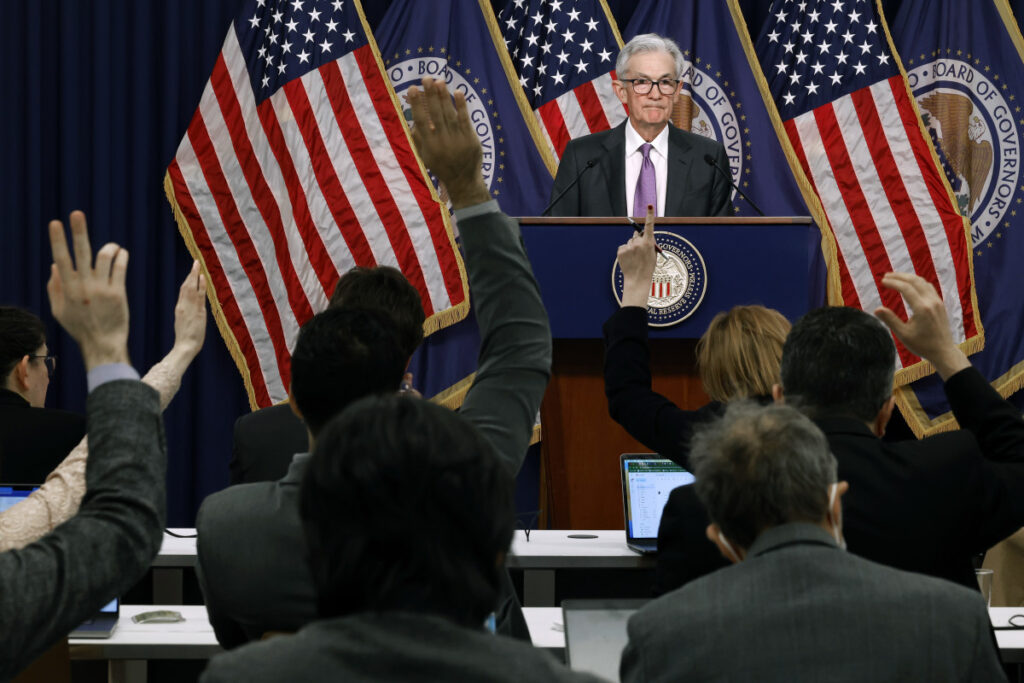Scott Olson/Getty Images
“The Fed is behind the curve. Again,” said Jan Szilagyi, founder of investment analytics group Toggle AI. “That’s not as tragic as it sounds because they’ll have a chance to catch up with a larger cut in September.”
“The economy isn’t exactly falling off the cliff, but momentum and many leading macro indicators are starting to suggest that a more aggressive easing will be necessary,” he argued. “After navigating the last few years quite deftly, it would be a shame to miss this opportunity.”
Inflation is still sticky: car insurance, daycare, rent
Inflation data, however, hasn’t justified such a move as yet, and the labor market, which represents the second side of the Fed’s twin mandate, remains solid enough to deliver both wage growth and historically low unemployment.
Core price pressures nudged higher last month, with big increases for things like car insurance, day care and rent, none of which are likely to be affected by Fed policies.
“The Fed is concerned that inflation has built up momentum over the last few years, which is still showing up in rapid increases of sticky service prices like car insurance,” said Bill Adams, chief economist for Comerica Bank in Dallas.
Related: CPI inflation report pumps the brakes on big Fed rate cut bets
“They’re weighing the stickiness of service-price inflation on the one hand against the softening of the job market on the other hand,” he added. “The tradeoff makes them more likely to cut rates by a quarter percent at next week’s decision than make a larger half-percent cut.”
Still, bets on a big Fed rate move next week have accelerated quickly over the past few days. CME Group’s FedWatch indicates a 45% chance of a half-point rate cut, up from just 28% last week.
More cuts are expected over the Fed’s next two meetings in November and December, with FedWatch pegging the benchmark Federal Funds Rate at 4.375% by the end of the year.
Job market shows notable hiring slowdown
The reasons for that are hard to pin down: Data from the Commerce Department’s reading of the Producer Price Index, some of which feeds into the Fed’s preferred inflation gauge, suggest moderating pressures over the coming months.
The August jobs report, which included a host of prior-month revisions, showed a notable hiring slowdown that could extend into the autumn should the broader economy weaken.
Energy prices are also on the downswing, with domestic gas prices likely testing the $3 per gallon mark next month, a level last seen in 2021, and global crude oil prices extending declines amid a pullback in demand from China and elsewhere.
Related: Mortgage rates make a huge move as bonds surge
At the same time, however, the Atlanta Fed’s GDPNow forecasting suggests a current-quarter growth rate of 2.5%, well north of anything resembling a recession. And core inflation pressures for August were pegged at an annual rate of 3.2%, also firmly ahead of the Fed’s preferred 2% target.
“The economy is strong and inflation generally is under control, (but) the market is pricing in four rate cuts this year and nine over the next 12 months,” said Skyler Weinand, chief investment officer at Regan Capital.
Sign up for TheStreet’s free daily newsletter.
“We think that’s aggressive and will only occur if unemployment runs well above 5% or if there is a calamity or black swan event,” he added.
The stock market, too, continues to defy the forecasts of most analysts from earlier this year, which had called for the S&P 500 to wilt under the pressure of elevated Fed rates and a slowing economy. The broadest measure of U.S. blue-chip shares is just 0.77% from its all-time high.
The long (rate-cut) wait is over
The long gap between Fed rate moves, meanwhile, has added to both financial market tensions and broader volatility, which culminated in a historic spike of the benchmark VIX index in early August, which triggered a week of global turmoil.
The weak summer jobs numbers have also led to calls for an emergency Fed rate cut, most notably from Wharton professor and U.S. Securities Industry Institute director Jeremy Siegel, who continues to make the case for outsized reductions.
“The bond market is signaling expectations for a weakening economy more sharply than the equity markets,” he wrote in a Wisdom Tree blog earlier this week. “This discrepancy is particularly fascinating and warrants close monitoring.”
Related: Bond market sends startling signal for stocks
Those bond market signals have extended into the end of the week, with the yield gap between 2-year Treasury notes and 10-year Treasury notes widening to 9 basis points, the highest since June 2022.
More Economic Analysis:
That essentially means investors are betting on big Fed rate cuts over the coming year, while parking money in longer-term bonds in order to protect themselves from the risk of slowing economic growth.
“While the U.S. economy is not in a recession and I do not forecast one, the slowdown necessitates more aggressive interest rate cuts by the Fed to mitigate risks and support economic stability,” Siegel added.
Related: Veteran fund manager sees world of pain coming for stocks
Read the full article here

